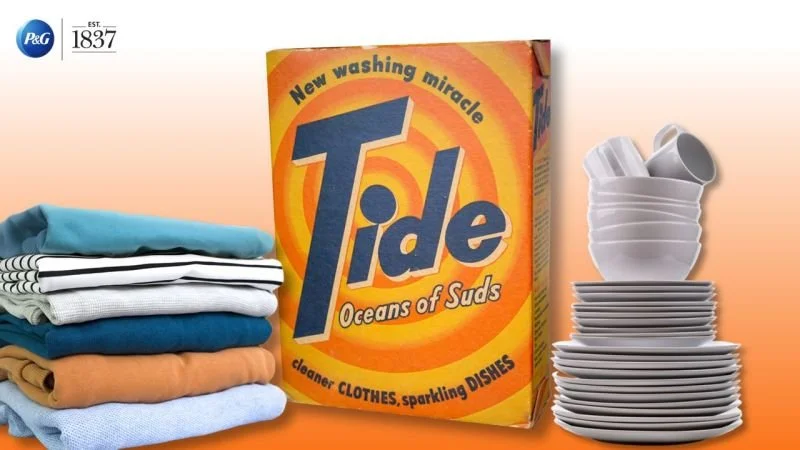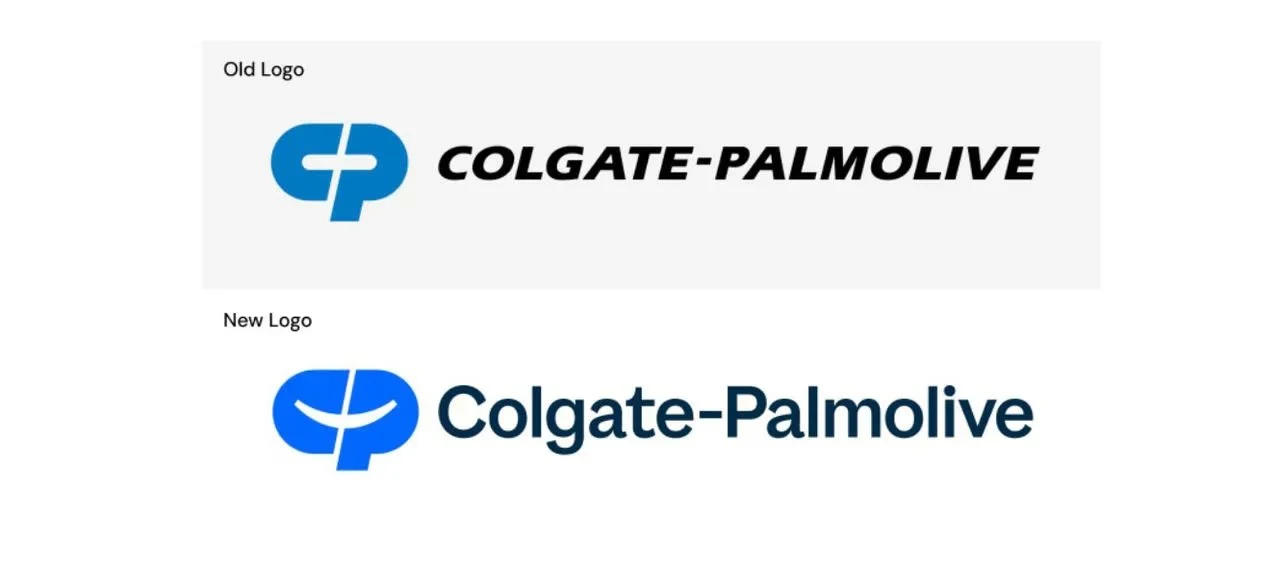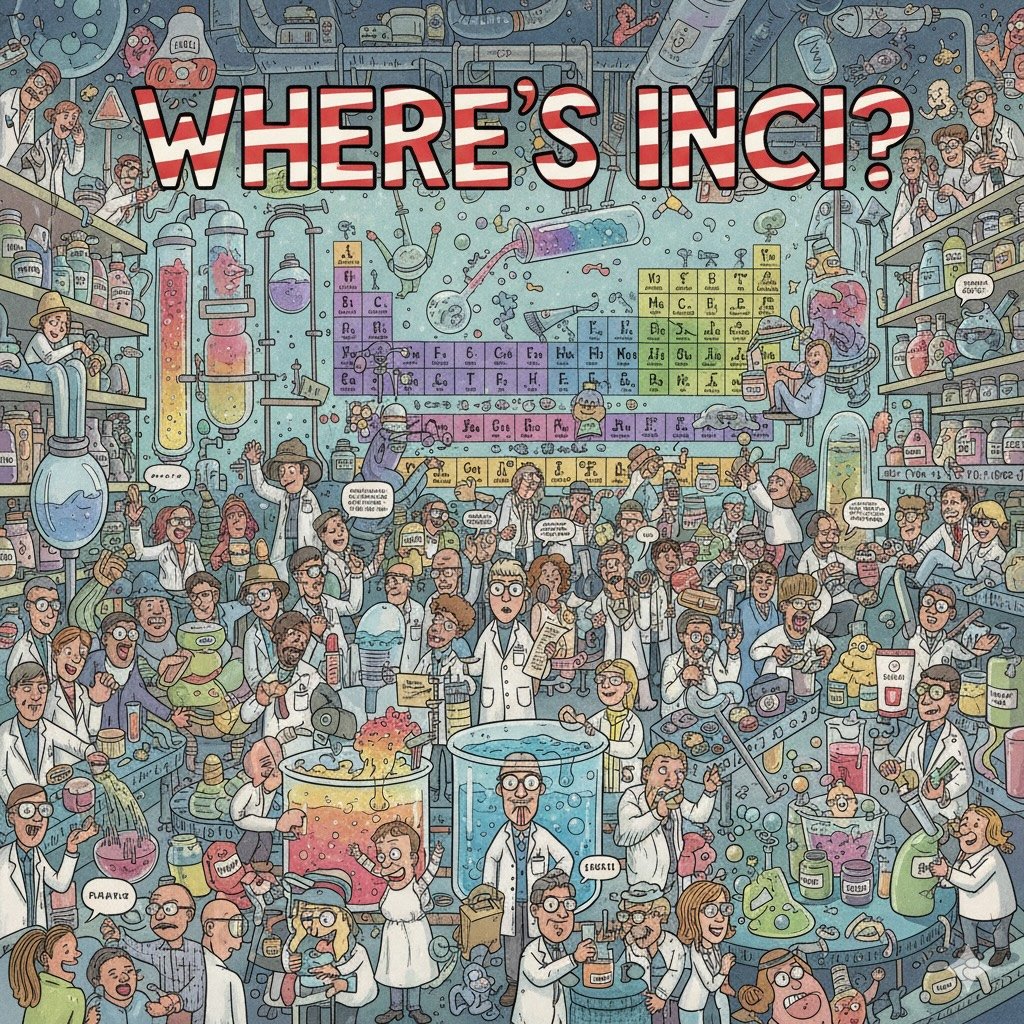Surfactants Monthly - September 2025
Surfactants Monthly – September 2025
I taught our first Oleochemicals Business Essentials course in Valencia, Spain last month, in front of the 14th ICIS World Oleochemicals Conference. It was a great experience and I look forward to doing more of these.
Here’s a summary of some key takeways from the conference:
By the way, we are in the heart of palm and surfactants country in November for our 11th Annual Asian Surfactants Conference https://events.icis.com/website/14105/home/. Did I mention it’s HRD Claimable. [My Malaysian friends know what this means. Let’s Go!]
For all qualifying Malaysian companies !!
The News
Macroeconomics: Every now and again, we like to see what chemicals focused investment banks are saying. Balmoral is an excellent chemicals specialist I-Bank (I remember when they started and they are an American success story) Here are some key points from their Q2 2025 report.
· M&A volume in the chemicals sector declined sharply in Q2 2025. Consolidation remained a key theme as companies pursued scale to offset input cost pressures.
· U.S. chemical production weakened in Q2 2025, with capacity utilization steady around 83%
· Easing Regulations. Regulatory momentum shifted in Q2 2025 as the EPA delayed PFAS reporting requirements and withdrew key SNUR proposals.
· Private equity remained cautious in Q2 2025 despite substantial accessible credit and dry powder that continues to exceed $1.2 trillion globally.
· Public chemical companies continue to trade at a discount relative to the broader market. In March, EV/NTM EBITDA multiples for key chemical sectors ranged from 7.73x in commodity chemicals to 15.70x in coatings.
Here’s a graph of stock performance for various chemical groupings over 12 months to July 25 vs the S&P500. Only Agrochemicals outperforms. Commodity and Diversified Chems down 43% and 47% !!
Wow - right?
They provide a useful set of tables of publicly traded chemicals stocks. And theres some really fascinating (to me anyway) points here.
· Pretty much all stocks are w a y off their 52 week highs. At a time when markets as a whole are at all time highs (albeit powered mainly by the Mag 7 and peers). When the inevitable market correction comes, do chemical stocks go down even further or have they had their correction already? Someone please opine!
· What’s going on with Clariant and Syensqo? Trading at 6.3 X EBITDA each. They’ve seen some good growth recently. I looked at Solvay – 5 X EBITDA. Even worse than Syensqo, it’s former partner. Are these take-private candidates? Will Berkshire step in, or Carlyle or someone? What do you think?
Back in the old days, apparently, P&G’s Tide was used for washing dishes as well as clothes. What does this say about the subsequent product proliferation with a product for every surface and item in your home? Not sure. Anyway, here’s my photographic evidence below. I’m keen to hear from readers who use Tide Pods in the dishwasher or Evo in the shower or Swiffers in… [OK that’s enough!]
This is legit (I think)
My alma mater, Pilot Chemical continues to rack up deals and make news, which is great. The latest involves RiKarbon, a green tech company. The press release doesn't say much about Rikarbon’s technology. The website’s also fairly light on detail. It looks like they start with waste biomass or waste plastics and then it’s maybe hydrolysis or pyrolysis and some catalysis – I’m just guessing from clues on the site. I was also looking for chemical names or INCI names but no luck. Rikarbon products include base oils, feedstocks for polymers and emollients – which are at the core of the collab with Pilot. Here, in part, is what the press release says:
Pilot [is] licensing the cutting-edge technologies for RiKarbon’s UpSycal® BA14 and BA17 product lines…UpSycal® BA14 and BA17 [Oh I just noticed. UpSycal = upcycle – geddit!?! OK – now I’m a big fan of these products!] are revolutionary advancements in the field of sustainable chemistry, offering unique benefits for skin care, color cosmetics, and hair care applications as drop-in replacements for D5 emollients in personal care formulations. "We are excited to license RiKarbon's technologies for its UpSycal® BA14 and BA17 product lines," said Graeme Biggin, Vice President, Growth and Innovation of Pilot Chemical Company. "These advancements bring unique and versatile emollient products and drop-in D5 replacements to our portfolio … The UpSycal® BA14 and BA17 product lines will be available to Pilot customers in the second quarter of 2026. I notice that Graeme is also listed as an advisor to Rikarbon on their website. So, very cool. The D5 and broader silicone replacement opportunity is huge and well worth going after. If I’m not mistaken, this would be Pilot’s first foray into this segment and so, very exciting (I note this from memory – so please correct me if I’m wrong). I’d like to invite Pilot or Rikarbon to use the blog tip line to let me know the INCI name(s) for the silicone alternatives and maybe some more detail on the process. Stay tuned.
The ever popular tip-line is open
I actually thought this was done a long time ago across the country, but I read in Cosmetics Business that Washington (the State – all the way over and high up on the Left Coast) is now the first state to ban formaldehyde releasing chemicals in cosmetics. The preservative, which is used in a range of cosmetics and hair treatments and their ingredients - and has been linked to cancer, will be prohibited under the Toxic-Free Cosmetics Act (TFCA) which comes into effect from 2027. Cosmetics manufactured, sold, offered for sale or distributed in the state of Washington containing intentionally added formaldehyde-releasing chemicals will be restricted. The rule defines an “intentionally added chemical” as one that serves an intended function in the final cosmetic product or an ingredient in the final cosmetic product, the group said. [Question for the blog community. Is this a big deal – for i) surfactant manufacturers and ii) for formulators?]
Headline news…. or not. ?
I occasionally recommend HAPPI magazine and I do so again for their September issue which has an article on surfactant trends. Here’s the link. It’s a good read, featuring folks from CoastSouthWest and BASF. In the interesting of being fair and balanced which we strive for here at the blog, here’s an article in HPC Today magazine on Asia and the future of surfactants, featuring er… me.
Something else from HAPPI. Someone asked “Ask Valerie” Valerie George if there is a “noticeable performance difference between SLES that’s ethoxylated with 2 versus 3 moles?” Short answer – no. She did go on to note, however that “I see a lot more 2-mole SLES available than 3-mole, so from a supply and pricing perspective, I would consider using 2-mole for multiple suppliers who can provide material and cost compete. Additionally, the higher the degree of ethoxylation, the more 1,4-dioxane may be present in the final product; this impurity is strictly regulated at the state level, and plaintiff’s attorneys do test. You’ll not only want to test upon initial production, but at the end of your accelerated stability.” All excellent points. I especially like that line about the attorneys. Nicely done.
For my money, Integrity Biochem, along with maybe Evonik, is the commercial leader in the new bio-based surfactant field. How so? They are a solid revenue and earnings generating, well established company, not a startup, built on new technology (Not fermentation BTW). The company has been around since 2017 and they are growing at a blistering pace. Now, full disclosure, I am an advisor to their board and so you have to apply a Blog Shameless Bias (BSB) factor, but even then, they are worth a real good look. The company recently a launched a new venture in Australia. with ICD BioChem, a newly formed company in the ICD Group of companies. Through this partnership, ICD BioChem will bring Integrity BioChem’s mining technology platform to the rapidly growing Australian mining market and build local manufacturing capacity to meet strong demand for sustainable industrial chemistries. ICD BioChem, with operational and technical support from Integrity BioChem, is currently developing a state-of-the-art bio-based chemical manufacturing facility in Perth. The facility will produce the company’s patented, market-first bio-based surfactant platform in addition to other bio-based chemistry at commercial scale to supply Australia’s mining, industrial, HI&I, and personal care sectors with high-performance, lower-environmental impact alternatives.
Big in Australia and most other places
I’ve mentioned the company No Palm Ingredients, of which I am an admirer, not least of which for the delightful name. No doubt about what they do. Refreshing change from the latest fad of making up silly names for your company (I’ll name no names but you can think of some I bet). They’ve signed an ingredient with their partner, NIZO Food Research to set up a demo plant at NIZO’s Food Innovation Campus in Ede (Netherlands). Here’s a picture:
Nice facilities
Wow – how cool is that. The company says “First industrial production is planned for the second half of 2026, with further growth in 2027 and 2028. The new site will create around 25 jobs, in addition to the 25 colleagues already working at our Wageningen HQ. With this factory, we are taking our technology to ‘technology readiness level’ 7 and 8, and bringing the full process under our own control at industrial scale,” So this is beginning to sound serious. Let’s see. They will not be the first to attempt it but could be the first to meet cost / performance requirements. I wish them luck.
Galaxy Surfactants had another great quarter as reported in Indian Chemical News: For the quarter, the company reported total revenue of Rs.1,289.2 crore [ I reckon that's about USD 145 Million], reflecting a 31.6 per cent increase over Rs. 979.5 crore in the same period last year and an 11.8 per cent rise compared to the previous quarter. EBITDA stood at Rs. 135.1 crore, up 4.3per cent year-on-year, while Profit After Tax (PAT) remained stable at Rs. 79.5 crore. EBITDA margins stood at 10.5 per cent, and PAT margins at 6.2 per cent.
Commenting on the results, K. Natarajan, Managing Director of Galaxy Surfactants Limited, said that volumes grew 5 per cent year-on-year and nearly double-digit sequentially across both performance surfactant and specialty care segments, indicating an improvement across all regions. In India, the market remained flat compared to last year but showed double-digit growth sequentially, supported by strategic product portfolio adjustments, a good monsoon, interest rate cuts, and rural stimulus measures.
In the AMET region, challenges in Egypt and Turkey were offset by resilient demand in the Gulf and Sub-Saharan Africa. The company’s agile supply chain management ensured continuity of operations despite ongoing geopolitical tensions. The Rest of the World region emerged as the strongest growth driver with a robust 16per cent year-on-year increase, fueled by demand in Latin America and the Asia-Pacific, while Europe delivered a richer product mix in alignment with Galaxy’s Vision 2030.
Despite facing supply-side challenges, including tight raw material availability and regional congestion, Galaxy successfully mitigated the impact through effective price pass-through mechanisms and prudent inventory management, Natarajan added.
Performance surfactants contributed Rs. 840.5 crore in revenue, while specialty care products generated Rs. 448.6 crore. Overall volume growth remained in the mid-single digits year-on-year.
Our blog has the best readers. And that was not always the case. In fact I think that for the first 5 years of so, we had precisely no readers, or at least none that would admit to being so. Now, despite the rather particular music section (or perhaps because of it) and the somewhat questionable image choices (or perhaps because of them), we have literally thousands of readers and that just makes me smile. One such reader chimed in on the dry SLS from last month and I quote (partially redacted): “I really enjoyed the August Surfactants Monthly—thank you for continuing to put out such high-quality information.” [OK I had to leave that in, sorry. He continues…] “A quick note regarding the colored SLS needles (Dongming Jujin Chemical): Stepan Philippines has been producing these for years (3 colors). During … (2007–2010), several MNCs used colored needles as either a replacement for, or to reduce, sodium sulfate levels in their powder detergent formulations. The needles added some "sparkle / magic" to the formulations...it’s always about marketing!...ICOF–Musim Mas is very active in the dry SLS and SCS space. As a backward-integrated producer of dry surfactants… somewhat unique in the market and … commissioned a new state-of-the-art facility in Medan, Indonesia a couple of years ago.” As noted recently, ICOF is in the process of acquiring the Stepan Philippines operations.
Another great reader confirms that these products are widely sold in Asia, even to the big soapers. He even sent specs from Jiangsu Youyang Pharmaceutical Co. Ltd. for red blue and green needles. 3 – 8 mm long and 0.7 mm diameter. 93% active with 2% max unsulfated, 1% chloride and 4% sulfate. So there you are.
In the same – great readers – vein: I wrote last month about a new China standard for natural detergent ingredients. A reader in the region came through big time and I will try to summarise here. :
First up here’s the link. You have to pay $165 to get the whole document though. More from my source:
Biobased Content and the Green Development of Detergents
◉ Biobased Content Requirements
The minimum required biobased carbon content is 34% for regular laundry detergents, while pre-treatment or stain-removal agents must reach 46%. The varying requirements across different types of detergents highlight the stricter standards applied to pre-treatment products.
◉ Accounting Differences Under Various Standards
Under the GB/T 39020-2020 standard, sodium and potassium ions are excluded from consideration, which differs from other international standards. This distinction must be taken into account when calculating biobased content, underscoring the complexities involved in applying different regulatory frameworks.
Domestic Green Product Standards
◉ Role of the GB/T 39020-2020 Standard
The GB/T 39020-2020 standard, "Green Product Assessment—Cleaning Products," categorizes cleaning products into specific types and evaluates their environmental performance through four primary indicators: resource utilization, energy consumption, environmental impact, and product quality. This framework provides clear guidance for the transition toward greener cleaning products.
◉ Requirements for Manufacturers
To qualify for green product certification, manufacturers must meet stringent requirements in areas such as pollutant emissions and management systems. This serves as a fundamental threshold, ensuring continuous progress toward sustainable development goals.
But wait – there’s more on this China standard from the same source: Guidelines On Natural Origin Index for Detergents .It is a group standard released by The China Association of Daily-use Chemical Products on 2024-09-09.
This document specifies the terms and definitions of the natural origin index for cleaning products, the calculation method for the natural origin index of raw materials, the calculation method for the natural origin index of formulations, and the labeling requirements. This document applies to household, personal, and industrial use daily chemical products that have cleaning and care functions.
It is based on ISO16128-1:2016 ,ISO16128-2:2017.With definitions as below .
1)Natural Ingredients
Components obtained from plants, animals, microorganisms, and minerals through physical processing, fermentation, extraction (without intentional chemical modification), etc. Does not contain components from petrochemical sources.(Reference source: ISO16128-1:2016)
2)Natural Origin Ingredients
Components that have undergone chemical and/or biological modification, with natural components accounting for more than 50% of the molecular weight.(Reference source: ISO16128-1:2016)
3)Natural Origin Index(NOI)
The proportion of natural components by molecular weight in the raw materials, with a numerical range of: 0.5 < Natural Origin Index ≤ 1. For values ≤ 0.5, it is directly set to 0. (Reference source: ISO16128-2:2017)
4)Natural Origin Index of a product
The sum of the product of the mass fraction of each component in the formula (calculated as 100% active substance content) and its natural source index.
Provided examples of common natural ingredients with an index ranging from 0.5 to 1 as below:
I think we’ve covered this in sufficient depth don’t you?
We’re in the wrong business – part 1: Maison Francis Kurkdjian (no, me neither) has launched a $28,000 bottle of perfume. The company said “In acquiring one of these exceptional numbered bottles, the holder of this certificate is welcomed into the ‘Friends of the Maison’ circle, an exclusive group that enjoys privileged access to custom services and confidential events” Huh .. well for only $27,000 I will personally welcome you into the ‘Friends of the Surfactants Blog’ circle. Venmo is open.
Meanwhile, your customers (if you sell into the CPG / Beauty space) are restructuring and laying people off. Here’s a selection (not a comprehensive list). Companies including Estée Lauder, Unilever, and Procter & Gamble are set to slash thousands of jobs, while others like Coty, Chanel, Kenvue, and Shiseido have also revealed plans for layoffs.
More on UL below…
As an avid reader of Ad Age, I learned that Colgate has changed their logo. It’s not likely to trigger any Cracker Barrel like backlash, I think. They ditched the all-caps name and put a smile in the logo instead of a straight line – because you know, toothpaste!. What do you think? Is common sense returning to corporate America? Too soon to tell, but I like this logo.
Not bad right?
ChemicalWeek published a nice article (you could almost say puff piece) on Croda last week. The stock has been way down recently, since COVID peak and so, CEO Steve Foots did a good job talking up the company prospects. Key Points:
Strategic Goal: Croda's goal for the next 18 to 24 months is to drive earnings growth by expanding volume and value in its core markets of consumer care and life sciences, while modernizing operations to reduce costs.
Five-Point Plan: The company's strategy is structured around a five-point plan consisting of three growth elements (leveraging recent investments, capitalizing on regional customer bases, and reinvigorating innovation) and two efficiency elements (cost reduction via digital/AI and optimizing its manufacturing footprint).
Shift in Customer Base: Revenue from local and regional customers in Croda's consumer care business has grown to constitute 81% of the total, up from 72% two to three years ago.
Divestment with a Remainder: Despite divesting most of its traditional industrial business, the remaining segment still generates approximately £200 million in annual revenue and helps support the utilization of shared manufacturing sites.
Future Market Trends: The company has identified the beauty industry's shift toward personalization and the move toward biologics in the pharmaceutical and agricultural sectors as the two most important future trends for its core markets.
You know we like Unilever here and not only because of their board of directors or their recent acquired affiliation with a rising American actress. The WSJ reported, and I quote “Unilever said it is evaluating its top 200 leaders and plans on “refreshing” about 25% amid a shake-up under its new chief executive. CEO Fernando Fernandez, who took the helm in March, said Wednesday that the one-by-one assessments would aim to ensure that the company’s leaders are the benchmark within the market. “Are they good enough? Are they at the level that Unilever deserves?” he said at Barclays Global Consumer Staples Conference. “We expect 25% refreshing from that.” [OK then. Expect to see “Refreshed from Unilever” showing up on resumes soon. Look I get you have to do this and I love the sort of red meat meritocratic capitalism vibe and all, but, you know – come on man, you coulda done exactly this – fired 50 people – with a slightly different statement or no statement at all. Am I the only one? Am I going soft? Blog readers, please let me know.] and [In the meantime, I am confident at least two UL affiliated folks remain untouched by this latest shakeup. If you don’t know what I’m talking about, go back and read past blogs or just keep reading every month going forward. I don't have time to explain here. ]
Safely un-refreshed for now…
Speaking of Unilever, I heard a lot at the World Oleo event about American consumers cutting back on the big brands and buying more private label and even consuming less overall. I then read in my well-thumbed copy of Modern Retail magazine that laundry care brands are betting big on specialty detergents as their next big growth driver. The article then goes on talk about Kris Jenner’s brand Safely (didn't know that one) and Dropps. So not exactly mainstream, but the article notes that “Even larger conglomerates like P&G are getting into the trend with releases like the Unstoppables fragrance booster. Gain’s and Tide’s latest odor-based detergents were the top two non- food new product releases in 2023, according to Circana data, while the Downy Rinse & Refresh laundry rinse was in the top 10 spot. But indie and direct-to-consumer brands tend to be able to roll out cutting-edge research to market more quickly;” There’s a quote in there from the ACI: Kristin DiNicolantonio, senior director of stakeholder communications at the American Cleaning Institute, said the latest trend in laundry care is about caring for specific fabrics the right way. “That might mean a delicate wash for cashmere, something tough enough for denim or a formula that’s gentle on sensitive skin,” she said. “People are expecting laundry care to be as personalized as their skin-care routines.” [Interesting. Will this enable brands to avoid the worst of a possible consumer recession? We’ll see.]
Tough enough for denim?
I was very pleased to see an old friend (from The American Cyanamid / Cytec days – remember them?), Mike Radossich get the CEO role at Syensqo. Good for Mike and great for Syensqo. I’m now regretting the shade I threw the company above about the stock. I’m sure he’ll do an outstanding job though.
More personnel news: From Pilot Chemical; CEO Mike Clark is retiring effective December 31, 2025. Clark will join the company’s Board of Directors in 2026. Christian MacIver, Pilot President and COO, will succeed Clark as CEO, effective January 1, 2026.
This move comes as part of a planned leadership succession strategy that has enabled the third-generation, family-owned company to continue to grow and innovate over the last 73 years. A chemical industry veteran with 40 years in the business — spanning from sales and marketing to business development, strategic planning, and operations leadership — Clark joined Pilot [from Sasol] in 2018 as Chief Operating Officer. In 2019 he was named President, and two years later he assumed the position of President and COO. He was named CEO effective January 1, 2022.
“Mike’s steady leadership, drive for results, and care for employees and our customers over the past seven years have positioned Pilot for continued growth,” said Paul Morrisroe, Chairman of the Pilot Board of Directors. “We are grateful to Mike for his leadership and the strong foundation he has helped build for the company’s long-term success. We're excited to welcome him to our Board and look forward to his continued contributions to the Pilot team.” [My congrats to Mike. Great career]
More on EUDR. I read an interesting piece on the CSPO Watch website here. They have an axe to grind, but I saw some perspectives, I did not appreciate:
Indonesia's Initiative: Indonesia is promoting a "South-South cooperation" to establish new sustainable vegetable oil standards with support from several BRICS nations.
Deforestation Statistics: Civil society organizations (CSOs) opposing a delay in the EU's Deforestation Regulation (EUDR) state that Côte d'Ivoire and Ghana have lost over 94% and 80% of their forests, respectively.
European Wildfires: According to a European Commission monitor, more than one million hectares of European forests have burned in 2025, a significant increase from 222,000 hectares in 2024.
Smallholder Deadline: Indonesia is implementing incentives to include its smallholders in sustainability programs, setting a deadline of March 2029 for their inclusion.
Malaysia's Position: Malaysia's commitment to no deforestation for its palm oil may earn it a "Low Risk" classification under the EUDR, leading some palm oil buyers to shift their sourcing to the country.
We’ve written here a few times about Ruby Bio, the surfactants via fermentation startup and they’ve talked at my conference in Jersey City. They got a nice write up in Biofuels Digest, here. The article traces their history from the Advanced Biofuels and Bioproducts Process Development Unit (ABPDU) at Lawrence Berkeley National Lab. ABPDU, where their yeast fermentation cracked the conundrum of separation from the dreaded fermentation broth. The other differentiator is starting only from sugar, not oils. The idea is to progress from corn sugar to waste and other cellulosic sugars. It’s a good article. Check it out.
Finally, in the news section, I got a press release today from a fairly new company, Viridi and it notes in part: “Viridi, a UK deep tech company pioneering CO2-to-chemicals innovation, today announced the launch of Vireya™, the world’s first commercial anionic surfactant produced using captured CO2 as a principal feedstock. The product is positioned as a next-generation replacement for workhorse anionics such as SLES, eliminating oil palm-derived feedstocks and increasing performance, while helping producers address tightening regulations and supply volatility. The Vireya™ range delivers up to 70% reduction in product carbon footprint and enhanced performance versus incumbent benchmarks, most notably improved cleaning capability and a 10x increase in skin mildness, all without containing any 1,4-dioxane. The delivery of this next-generation essential product is enabled by Viridi’s unique, solid, reusable catalyst platform that converts captured CO2 into surfactant intermediates. The process is designed to run on existing reactors with minimal modification, operating at lower temperatures and standard pressures, and with straightforward separation and catalyst recovery—enabling immediate deployment within existing manufacturing assets.
I contacted the company to get more information. They are not ready to share the chemical identity of the products, nor INCI names. They did say the first products to launch are of a sulfate type. They added that the products could be made on existing alkoxylation assets and that currently they are making at the multi-Kg scale. Interesting and something to keep an eye on right?
We’ll find him…
Market News:
In detergent range alcohols, Asia's fatty alcohols market is experiencing downward price pressure on C12-14 blends and long chains due to declining feedstock PKO prices and weak demand, though C10 sees firm demand. The PKO price decline is partly attributed to a second delay in the EU Deforestation Regulation (EUDR). Mid-cut supply is limited by plant maintenance, and upcoming holidays will slow spot activity. In the US, Q4 contracts for mid-cuts are rising, while long chains are falling, with petrochemical alcohols maintaining a cost advantage. Europe's market sees stable spot prices, but PKO values are softening post-EUDR delay, influencing Q4 contract discussions that are targeting increases amidst continued tight supply from planned turnarounds.
The Asian fatty alcohol ethoxylates is subdued, with spot activities slowing due to October holidays in China and India, alongside thin discussions and eroded consumer confidence. Feedstock fatty alcohol mid-cuts C12-14 prices have been trending down, while ethylene oxide feedstock remains flat. Demand is further hampered by ongoing US global tariff policies and macroeconomic uncertainties, restricting trades mostly to a term basis. FAE supply remains limited as a regional plant operates at reduced rates due to constrained ethylene oxide access. The outlook points to continued elevated feedstock prices, sluggish demand from weak consumer confidence, and macroeconomic headwinds weighing on the market, despite an uptrend in China's factory activity.
The Asian linear alkylbenzene (LAB) market is currently stable, despite suppliers pushing for higher prices in anticipation of tighter supply due to ongoing plant maintenance across China and Asia. Buyers, however, are lobbying for lower values, influenced by easing upstream crude oil and benzene markets. Market activity is subdued due to national, while India's market remains supported by steady demand and snug availability. The downstream LAB sulfonate (LAS) market is holding steady, awaiting clearer direction. Looking ahead, upcoming maintenance in China, Asia, and the Middle East will constrain near-term supply, though a new Chinese production line starting in October could offer some relief. Upstream benzene prices are declining, influenced by crude volatility and weak downstream demand, while several LAB plant turnarounds and new line startups are noted in the region.
Music Section
I’ve been listening to a bit of everything this month. However, as autumn (fall) pushes its nose into the summer idyll with more insistence day by day, my tastes have turned to the fecund fields of modern psychedelia. I know that last sentence sounds like it was written by AI, but I swear it came out of my own fevered musings. Here we go with some heavily distorted and downtuned themes for a turn of the seasons.
First up, what must be one of the greatest band names, Acid Mammoth with their 2019 album, Under Acid Hoof. There is a father and son duo from Greece on guitars. And it seems clear that dad grew up listening to Black Sabbath. Enjoy!
And here, something similar from the remarkably named Bongripper, their 2108 album, Terminal, with the three appropriately named tracks: Endless, Descent, Into Ruin.
OK how about something a little (slightly) more up, shall we say. Earthless, from Australia with Uluru Rock off the album, From the Ages.
And from the same band, the song Acid Crusher, live.
An early influence on this scene from 1974, Camellas
And of course from the progenitors
That’s it. See you very soon for Asian Surfactants XI (that’s Eleven) November 13 - 14 in KL.
https://events.icis.com/website/14105/home/













